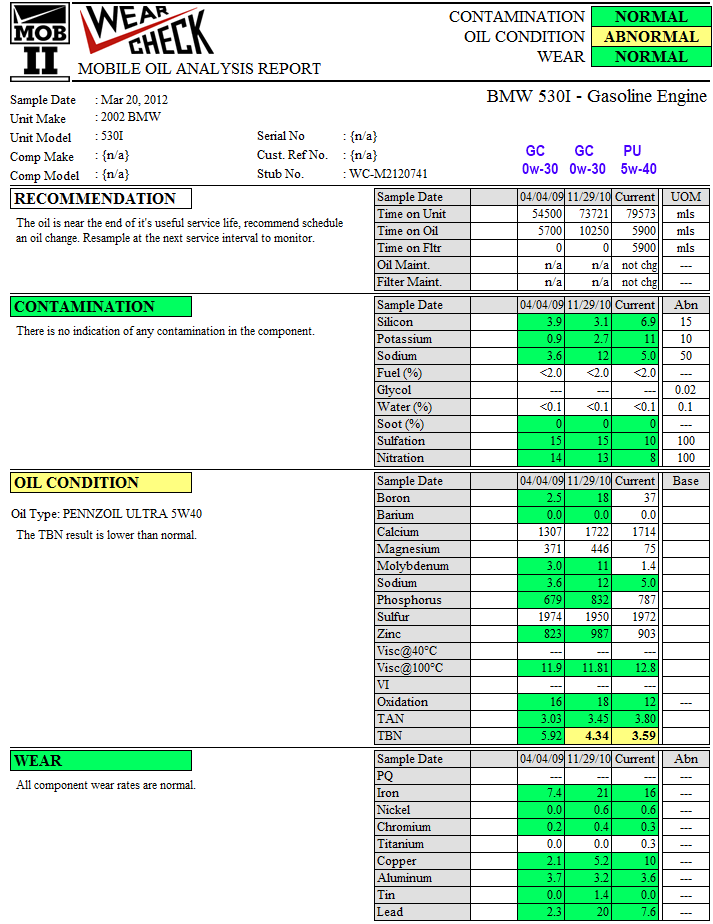Time in service: 16 months (November 2010 – March 2012)
Driving conditions: a mix of short trips and longer trips, mostly around town; a lot of time spent just sitting in the garage on weekdays.
Oil filter: Mahle/Knecht (OEM)
Air filter: Mann (OEM)
Make-up oil: 0.5 qt
I was also adding about 3 oz of LC20 every 1k miles or so.
Sampling technique: Blackstone pump via dipstick tube.
Compare these results with the GC sample from 4/4/2009 as the driving conditions and time/miles in service were somewhat similar. Seems like TBN retention of GC was a bit better. Copper seems to be trending up, but I think it's still low enough to not worry much.
Oil has not been changed yet. Judging by these results, would you change it or would you keep going?

Sample data:

Link to PU 5w-40 VOA
Link to my previous UOA
Driving conditions: a mix of short trips and longer trips, mostly around town; a lot of time spent just sitting in the garage on weekdays.
Oil filter: Mahle/Knecht (OEM)
Air filter: Mann (OEM)
Make-up oil: 0.5 qt
I was also adding about 3 oz of LC20 every 1k miles or so.
Sampling technique: Blackstone pump via dipstick tube.
Compare these results with the GC sample from 4/4/2009 as the driving conditions and time/miles in service were somewhat similar. Seems like TBN retention of GC was a bit better. Copper seems to be trending up, but I think it's still low enough to not worry much.
Oil has not been changed yet. Judging by these results, would you change it or would you keep going?

Sample data:

Link to PU 5w-40 VOA
Link to my previous UOA
